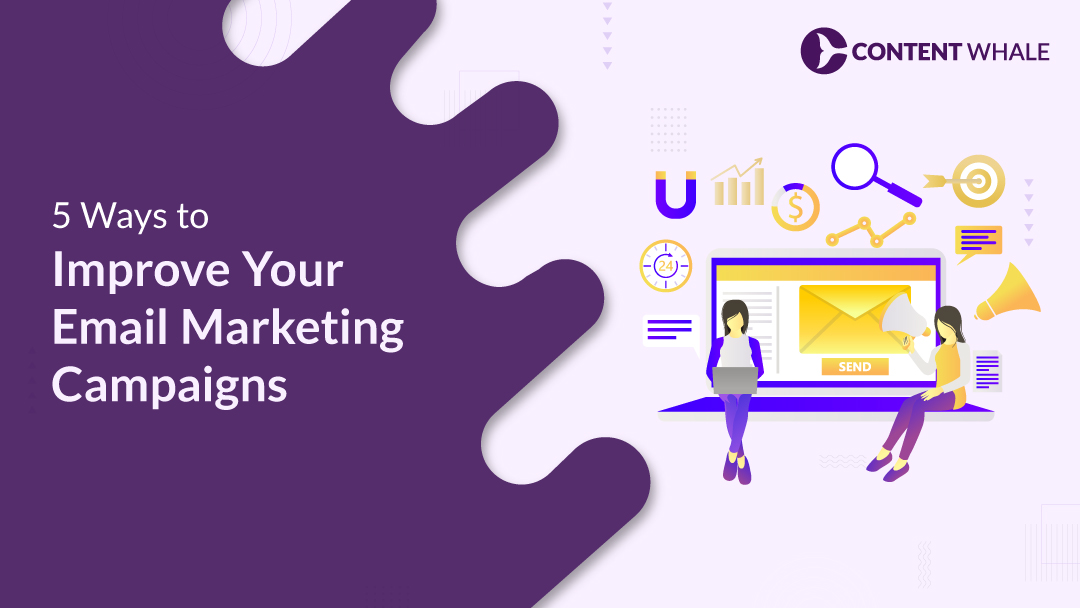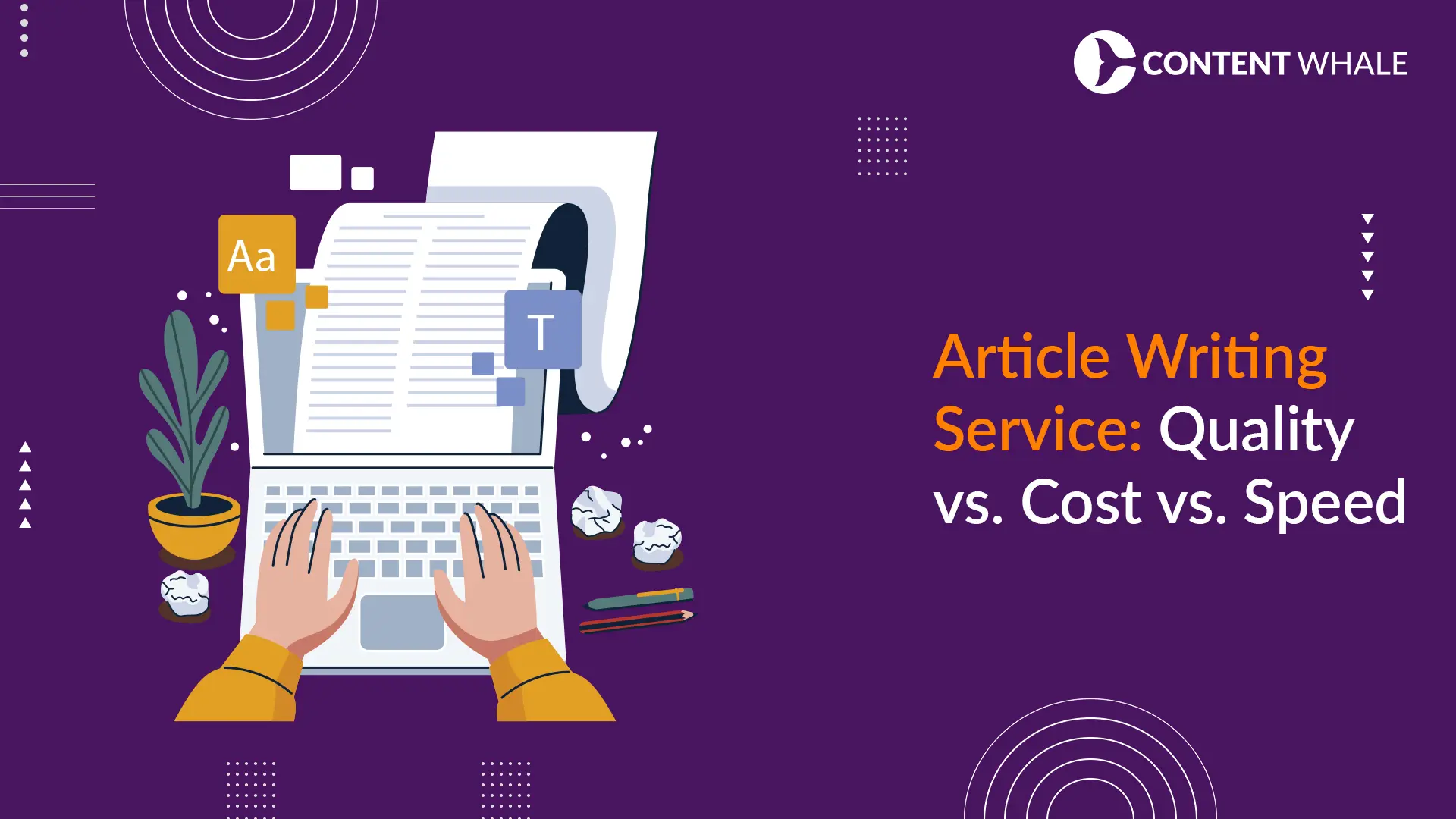Quick Summary
Learn five key strategies to enhance your email marketing campaigns. Increase email engagement and email open rates with actionable tips. Discover the power of email personalization, email segmentation, and marketing automation to boost your email strategy. Utilize effective email marketing tools to streamline your email campaign processes and analyze results with email analytics. Improve your email list building efforts for better reach and impact.
Email marketing remains a cornerstone of digital marketing, offering a direct line to your audience. Despite its potential, many marketers struggle with common issues like low email open rates and poor email engagement. These challenges can be frustrating, especially when you’ve put effort into your email campaign.
Why is email marketing so important? It allows for personalized communication, which can significantly improve engagement and conversion rates. However, to unlock its full potential, you need a solid email strategy that incorporates the latest practices and tools.
This article will guide you through five practical ways to improve your email marketing campaigns. From leveraging marketing automation to refining your email personalization techniques, we’ll cover actionable tips to boost your results. Whether you’re aiming to enhance your email segmentation or looking for effective email marketing tools, we’ve got you covered.
By implementing these strategies, you can increase your email open rates and build stronger connections with your audience. Let’s dive in and explore how you can make your next email campaign more effective and impactful.
Focus on Personalization

Personalization is key to a successful email marketing strategy. By tailoring your emails to the individual recipient, you can significantly boost email engagement and email open rates.
Importance of Personalized Content
Personalized emails make your audience feel valued. When you use their name or reference past interactions, it creates a sense of connection. This can lead to higher open rates and increased engagement.
Using Customer Data for Segmentation
Effective email segmentation is essential for personalization. By analyzing customer data, you can group your audience based on demographics, purchase history, behavior, and preferences. This allows you to send targeted messages that resonate with each segment.
Crafting Personalized Subject Lines and Content
Personalized subject lines can grab attention and increase open rates. Including the recipient’s name or relevant details can make your emails stand out in a crowded inbox. Similarly, the content should address the recipient’s needs and interests. For instance, recommending products based on past purchases can enhance the relevance of your emails.
Tools and Software for Personalization
Several email marketing tools can help with personalization. Platforms like Mailchimp, HubSpot, and ActiveCampaign offer features for email segmentation and personalized content creation. These tools use customer data to automate the personalization process, making it easier to implement.
Case Studies of Successful Personalized Campaigns
Numerous brands have seen success with personalized email campaigns. For example, Amazon’s personalized product recommendations based on browsing history are a classic example of effective personalization. Another case is Netflix, which uses viewing history to recommend shows and movies, leading to higher engagement.
By focusing on email personalization, you can create more meaningful connections with your audience. This approach not only boosts email engagement but also drives better overall results for your email marketing efforts.
Optimize for Mobile

Mobile optimization is vital for any email marketing strategy. With a significant portion of users checking their emails on smartphones and tablets, ensuring your emails are mobile-friendly can dramatically improve your email engagement and email open rates.
Increasing Prevalence of Mobile Email Users
More than half of all emails are opened on mobile devices. This trend underscores the importance of designing emails that look great and function well on smaller screens.
Tips for Creating Mobile-Friendly Email Designs
- Responsive Design: Use responsive design techniques to ensure your emails automatically adjust to fit different screen sizes. This involves flexible layouts and scalable images.
- Simple Layouts: Keep your email layouts simple and uncluttered. Avoid multiple columns and stick to a single-column format that’s easier to read on mobile devices.
- Large Fonts and Buttons: Use larger fonts and buttons to make your emails more readable and clickable. Small text and tiny buttons can be frustrating for mobile users.
Importance of Concise and Clear Content for Mobile Readers
Mobile readers are often on the go and don’t have time for lengthy content. Keep your emails concise and to the point. Use short paragraphs, bullet points, and clear calls to action. This makes it easier for readers to quickly grasp the key messages.
Testing Emails on Various Devices and Platforms
Before sending out your email campaign, test your emails on different devices and email clients. Tools like Litmus and Email on Acid can help you see how your emails will look on various screens. This ensures that your emails are consistently presented across all platforms.
Examples of Brands with Effective Mobile-Optimized Emails
Brands like Starbucks and Airbnb excel in mobile email optimization. Starbucks uses simple, visually appealing designs with clear calls to action, making their emails easy to interact with on mobile devices. Airbnb’s emails are clean, with plenty of white space and large, tappable buttons, ensuring a seamless mobile experience.
By optimizing your emails for mobile, you can enhance your email engagement and email open rates. This part of your email strategy is essential for reaching and resonating with the growing number of mobile email users.
Improve Your Subject Lines

Crafting compelling subject lines is essential for boosting email open rates. The subject line is the first thing recipients see, and it significantly influences whether they open your email or ignore it.
The Role of Subject Lines in Email Open Rates
Subject lines play a crucial role in your email marketing strategy. A well-crafted subject line can entice recipients to open the email, leading to higher email engagement. Conversely, a poorly written subject line can result in your email being overlooked or marked as spam.
Tips for Crafting Compelling and Relevant Subject Lines
- Keep It Short and Sweet: Aim for subject lines that are concise and to the point. Ideally, keep them under 50 characters.
- Incorporate Personalization: Use the recipient’s name or relevant details to make the subject line more engaging. Personalized subject lines can improve email open rates.
- Create a Sense of Urgency: Phrases like “Limited Time Offer” or “Act Now” can prompt immediate action from recipients.
- Use Numbers and Lists: Numbers can make your subject line stand out and give a clear idea of what to expect, e.g., “5 Tips for Better Email Marketing.”
- Ask Questions: Posing a question can pique curiosity, e.g., “Are You Ready to Boost Your Email Engagement?”
A/B Testing Subject Lines to Determine What Works Best
A/B testing involves sending two different subject lines to a small segment of your email list and analyzing which one performs better. This helps you understand what resonates with your audience and optimize future email campaigns. Email marketing tools like Mailchimp and Campaign Monitor offer A/B testing features to streamline this process.
Avoiding Spam Triggers in Subject Lines
Certain words and phrases can trigger spam filters, causing your emails to land in the junk folder. Avoid using excessive punctuation, all caps, or words like “Free” or “Buy Now.” Keeping your subject lines clear and straightforward helps avoid these pitfalls.
Successful Subject Line Examples from Different Industries
- E-commerce: “Don’t Miss Out on Our Exclusive Sale!”
- Tech: “Top 10 Gadgets You Need Right Now”
- Travel: “Dreaming of a Getaway? Discover Your Next Destination”
By focusing on creating engaging and relevant subject lines, you can significantly improve your email open rates and overall email marketing success. Implement these tips and start seeing better results from your email campaigns.
Leverage Automation
Marketing automation is a game-changer for email marketing. By automating repetitive tasks, you can focus more on strategy and content creation, ultimately boosting email engagement and email open rates.
Benefits of Marketing Automation in Email Campaigns
Marketing automation streamlines your email strategy by managing tasks like sending welcome emails, follow-ups, and re-engagement campaigns. This ensures timely communication with your audience without manual intervention, increasing efficiency and effectiveness.
Setting Up Automated Email Workflows
Automated workflows are essential for guiding subscribers through the customer journey. Here are key automated workflows to consider:
- Welcome Series: Greet new subscribers with a series of emails that introduce your brand, share your values, and provide valuable content.
- Abandoned Cart Reminders: Encourage customers to complete their purchases by sending reminders about items left in their cart.
- Re-engagement Campaigns: Win back inactive subscribers with special offers or compelling content tailored to their interests.
Examples of Automated Emails
- Welcome Series: A series of 3-5 emails introducing your brand and its offerings, showcasing testimonials, and inviting new subscribers to explore more.
- Abandoned Cart Reminders: Automated emails reminding customers of their pending purchases, often with a discount or incentive to complete the transaction.
- Re-engagement Campaigns: Targeting subscribers who haven’t interacted with your emails for a while, offering them special deals or exclusive content to reignite their interest.
Tools for Email Marketing Automation
Several email marketing tools offer robust automation features. Here are a few:
| <table border=”1″ cellspacing=”0″ cellpadding=”10″> <thead> <tr> <th>Tool</th> <th>Description</th> </tr> </thead> <tbody> <tr> <td><strong>Mailchimp</strong></td> <td>Known for its user-friendly interface and powerful automation capabilities, including pre-built workflows for various email campaigns.</td> </tr> <tr> <td><strong>ActiveCampaign</strong></td> <td>Offers advanced segmentation and automation features, allowing for highly personalized and timely email communications.</td> </tr> <tr> <td><strong>HubSpot</strong></td> <td>Integrates with your CRM to automate emails based on customer behavior and lifecycle stages, ensuring relevant messaging.</td> </tr> </tbody></table> |
Case Studies of Businesses Effectively Using Email Automation
- Spotify: Uses automation to send personalized playlists and recommendations based on user listening habits, enhancing email engagement.
- Sephora: Implements automated emails for abandoned carts, product recommendations, and loyalty program updates, driving higher conversion rates and customer retention.
- Amazon: Leverages automation to send timely product recommendations, order confirmations, and delivery updates, creating a seamless customer experience.
By leveraging marketing automation, you can ensure consistent, relevant, and timely communication with your audience. This approach not only enhances email engagement but also improves your overall email marketing results. Implement these automated workflows and tools to streamline your email campaigns and drive better outcomes.
Conclusion

To recap, improving your email marketing campaigns involves focusing on personalization, optimizing for mobile, crafting compelling subject lines, and leveraging marketing automation. These strategies are designed to enhance your email strategy and boost email engagement and email open rates.
Personalization helps create a deeper connection with your audience. By using email segmentation and email personalization, you can deliver relevant content that resonates with each recipient. Optimizing for mobile ensures that your emails are accessible and visually appealing on all devices, which is critical given the prevalence of mobile email users.
Crafting compelling subject lines is essential for capturing attention and encouraging recipients to open your emails. A/B testing and avoiding spam triggers can significantly improve your results. Marketing automation simplifies your email campaign processes, allowing you to send timely, relevant emails without manual intervention.
Using effective email marketing tools can further enhance your efforts. Tools like Mailchimp, ActiveCampaign, and HubSpot provide the features needed to implement these strategies efficiently. By continuously analyzing your results with email analytics, you can refine your approach and achieve even better outcomes.
Implement these strategies to elevate your email marketing efforts, increase email engagement, and see a substantial improvement in your email open rates. Stay committed to learning and adapting, and your email campaigns will thrive.
FAQs
How can I personalize my email marketing campaigns?
Personalization is key to effective email marketing. Start by using email segmentation to group your audience based on demographics, behaviors, or purchase history. Use email personalization techniques like including the recipient’s name, recommending products based on past purchases, and sending tailored content. Employing email marketing tools like Mailchimp or HubSpot can automate and streamline these personalization efforts, making your email campaigns more effective.
What are the best practices for mobile-friendly emails?
Creating mobile-friendly emails is essential to increase email engagement. Use a single-column layout and ensure your text is large enough to read on small screens. Keep your content concise and use clear, clickable calls to action. Test your emails on various devices to ensure they look good everywhere. Tools like Litmus can help you preview how your emails will appear on different devices.
How do I write an effective email subject line?
An effective subject line is crucial for improving email open rates. Keep it short and to the point, ideally under 50 characters. Personalize it by including the recipient’s name or specific details. Create a sense of urgency or curiosity, but avoid spammy language. A/B testing different subject lines can help you determine what resonates best with your audience.
What is email marketing automation, and how can it help my business?
Marketing automation uses software to automate repetitive tasks in your email strategy, such as sending welcome emails, follow-ups, and re-engagement campaigns. This not only saves time but also ensures timely and relevant communication with your audience. Tools like ActiveCampaign and Mailchimp offer robust automation features that can help improve your email engagement and streamline your email campaigns.
How can I measure the success of my email marketing campaigns?
To measure the success of your email marketing efforts, focus on key metrics like email open rates, click-through rates (CTR), conversion rates, and overall ROI. Use email analytics tools to track these metrics and gain insights into your audience’s behavior. Regularly reviewing these analytics will help you refine your email strategy and achieve better results.





